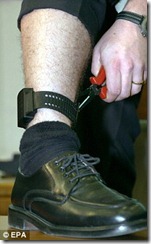 Radio Tagging or Radio Frequency Identification (RFID) is a gift of modern technology, which incorporates the use of electromagnetic or electrostatic, coupling in the radio frequency (RF) portion of the electromagnetic spectrum to uniquely identify an object, animal, or person.
Radio Tagging or Radio Frequency Identification (RFID) is a gift of modern technology, which incorporates the use of electromagnetic or electrostatic, coupling in the radio frequency (RF) portion of the electromagnetic spectrum to uniquely identify an object, animal, or person.
RFID is used in place of bar codes in many retail markets globally. The use of this technology is also made to keep a tab on animals in the wild, specially, the endangered species, and for the management of animals in advanced countries.
RFID uses communication via radio waves to exchange data between a reader and an electronic tag attached to an object, for the purpose of identification and tracking.
Some tags can be read from several meters away and beyond the line of sight of the reader.
To understand the technology of RFID, one first needs to understand that it is chip-based. In terms of technology, RFID has two components.
There is a tag with a microchip in it. The microchip in turn is attached to an antenna that picks up signals from and sends signals to a reader.
The tag contains a unique serial number, but may have other information, such as a customer's account number.
Tags come in many forms, such as the smart labels that are stuck on boxes, smart cards and key-chain wands for paying for items, and a box that can be affixed to windshield to enable toll collection without stopping the vehicle.
RFID tags could be active tags, passive tags or semi-passive tags, meaning they may lie dormant or send information of varying degrees and types, depending on how the chip is programmed.
The use of RFID on humans is however, rare. Indian students at the Tri-Valley University, US, which has been declared as a 'sham' university, have been required to wear anklet tags to monitor their movments. Many others have been detained and released on bond.
This has enraged external affairs minister S M Krishna, who has said that the tagging of Indian students is "inhuman and unacceptable".







0 comments:
Post a Comment